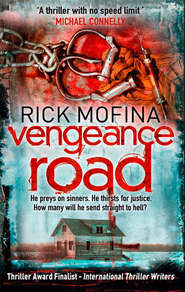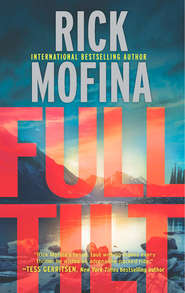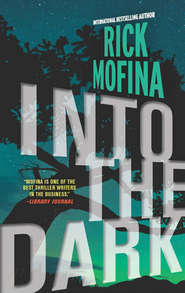По всем вопросам обращайтесь на: info@litportal.ru
(©) 2003-2024.
✖
Six Seconds
Автор
Год написания книги
2018
Настройки чтения
Размер шрифта
Высота строк
Поля
A helicopter.
Everything blurred in the prop wash: A rescue tech descended, tethered to a hoist and basket. Graham helped position the girl into it, then watched her rise into the chopper. Then the tech returned for Graham, strapped him into a harness and raised him from the water. Mountains spun as they ascended over the river to a meadow where they put down. The techs pulled off his wet clothes, wrapped him in blankets and they lifted off.
As rescuers worked on the girl, the helicopter charged above a rolling forest valley that cut through the mountains. In minutes they came to a clearing near a trailside hostel where several emergency vehicles waited, including a second helicopter—the red STARS air ambulance out of Calgary. Its rear clamshell doors were open. Its rotors were turning.
“She’s not responding,” Graham heard the techs shout to the medical crew.
Wearing their flight suits and helmets, the emergency doctor, paramedic and nurse worked quickly, administering CPR, an IV, slipping an oxygen mask over her face, transferring her to a gurney. They packaged her into the medical chopper which thundered off to a trauma hospital in Calgary.
Graham stayed behind on the ground. He was barefoot and enshrouded in blankets as paramedics from Banff treated him for mild hypothermia and cuts to his hands and legs. Other officials watched and waited.
“Let’s get you to the hospital in Banff for a better look,” a paramedic said.
Graham shook his head, watching the red helicopter disappear in the east.
“I’m fine. I want to stay with the search.”
A park warden trotted to his pickup, dug out a set of government-issue orange coveralls—the kind firefighters wore for forest fires—woolen socks and boots, and tossed them to Graham.
“They’re dry and should fit,” the warden said, nodding to a change room. “When you’re ready, I’ll drive you to the search center.” He shook Graham’s hand. “Bruce Dawson.”
A few minutes later, with Graham in the passenger seat, Dawson ground through all gears as his truck rumbled along the dirt road that cut southwest through pine forests. On the way, he radioed a request to the searchers to retrieve the Mountie’s bag from his campsite, along with his badge, boots and things he’d left by the river, and bring them to the center.
“What’s the status?” Graham asked. “Those kids didn’t come up here alone.”
“Right, we figured on adults, too. We’ve expanded the perimeter downstream.” Dawson kept his eyes on the road, letting several moments pass before he said, “I was listening on the radio after they spotted you in the river with the girl. That’s a helluva thing you did.”
Graham looked to the mountains without responding.
It was a bumpy thirty-minute ride over backcountry terrain to the warden’s station for the Faust region. It sat on a plateau near a ridgeline trail. In its previous life the station had been a cookhouse built from hand-hewn spruce logs by a coal mining company in 1909.
Now it was doubling as the incident command center. Its walls were covered with maps. The main meeting room was jammed with people and a massive table was loaded with computers, GPS tracking gear and more maps. Sat phones and landlines rang, amid ongoing conversations as radios crackled nonstop over the hum of search helicopters.
The station was also equipped with basic plumbing. Graham took a hot shower, changed into his clothes from his retrieved bag. As he joined the others, his chief concern was the girl.
“What’s her status?”
“No word yet.” Dawson offered him a mug of coffee and a ham sandwich. Graham accepted the coffee, declined the sandwich. “We know they landed at Alberta Children’s moments ago. While we’re waiting for news, I’ll update you on the search.”
Referring to the map spread out on the big table, Dawson touched the tip of a sharpened pencil to a point along the river.
“This is where the boy was found. Mounties from Banff and Canmore are at the scene, and the medical examiner’s just arrived.”
“Do we have an idea who the boy is? Or who he belongs to? Any missing children reports?”
Dawson shook his head. “Not yet. Too many possibilities.” His pencil followed the river. “You’ve got scores of campsites, day-trippers. We’re going through the registrations and we’ve got teams going to each site to account for each visitor. People are mobile. They’re on trails, or in Banff doing the tourist thing, or in Calgary, or wherever. It’s going to take time.”
Graham understood.
“We’ve gridded the area. We’ve got people on the ground, on the water, in the air, we’re searching every—”
“Is there a Corporal Graham here?” Across the room, a young woman held up a black telephone receiver.
“That’s me,” Graham said.
“Call for you!”
Taking it, Graham cupped a hand over one ear.
“Dan, we heard what you did. You okay?”
It was his boss, Inspector Mike Stotter, who headed Major Crimes out of the RCMP’s South District in Calgary.
“I’m fine.”
“You went above and beyond the call.”
“No, I didn’t.”
“Dan, listen, I’m sorry, but they just pronounced her at the hospital.”
“What?”
“They just called us. She didn’t make it. I’m sorry.”
Her trembling body. Her eyes. Her last words,spoken into his ear.
Graham rubbed his hand over his face.
“Give me this case, Mike.”
“It’s too soon for you.”
“I was coming back from leave this week.”
“I’ve got some cold cases ready for you. Look, this one’s likely going to be a wilderness accident, nothing suspicious. We don’t need to be there. Fornier’s rookies in Banff can have it.”
“I need this case, Mike.”
“You need it?”
“Did the chopper crew or the hospital indicate if she said anything? If she tried to speak before she died?”
“Hang on. Shane was talking to them.”
Graham looked at the mountains, feeling something churning in his gut until Stotter came back on the line.
“Nothing, Dan, why?”











